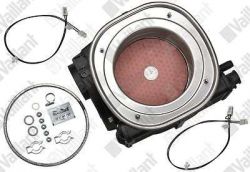Hello
error F 75 has been popping up in my Vaillant Vp 5 stove for a long time, at first once a month, gradually, and now even twice a day, I suspect it's a pressure sensor, so I wanted to order it, but I'm not sure, because my sensor has no : 0020016532, and on websites after searching (e.g. in Amazon, Allegro) it shows me only the sensor number; 0020059717, will this sensor fit my Vaillant Vp 5 stove? can anyone advise me?
I also have such a request, because this furnace is scaled (I have no idea about furnaces at all) so I called (twice) a specialist from Vaillant to clean the furnace of scale, and he replied that the furnace is too much scaled and it cannot be descaled I need to buy a new furnace and he gave me offers of new furnaces, I think he is lying to me and wants me to buy a new furnace from Vaillant.
So I also have a request that someone write me step by step how I can clean it of scale, and I will do it myself.
Thank you in advance for your help and best regards
error F 75 has been popping up in my Vaillant Vp 5 stove for a long time, at first once a month, gradually, and now even twice a day, I suspect it's a pressure sensor, so I wanted to order it, but I'm not sure, because my sensor has no : 0020016532, and on websites after searching (e.g. in Amazon, Allegro) it shows me only the sensor number; 0020059717, will this sensor fit my Vaillant Vp 5 stove? can anyone advise me?
I also have such a request, because this furnace is scaled (I have no idea about furnaces at all) so I called (twice) a specialist from Vaillant to clean the furnace of scale, and he replied that the furnace is too much scaled and it cannot be descaled I need to buy a new furnace and he gave me offers of new furnaces, I think he is lying to me and wants me to buy a new furnace from Vaillant.
So I also have a request that someone write me step by step how I can clean it of scale, and I will do it myself.
Thank you in advance for your help and best regards




